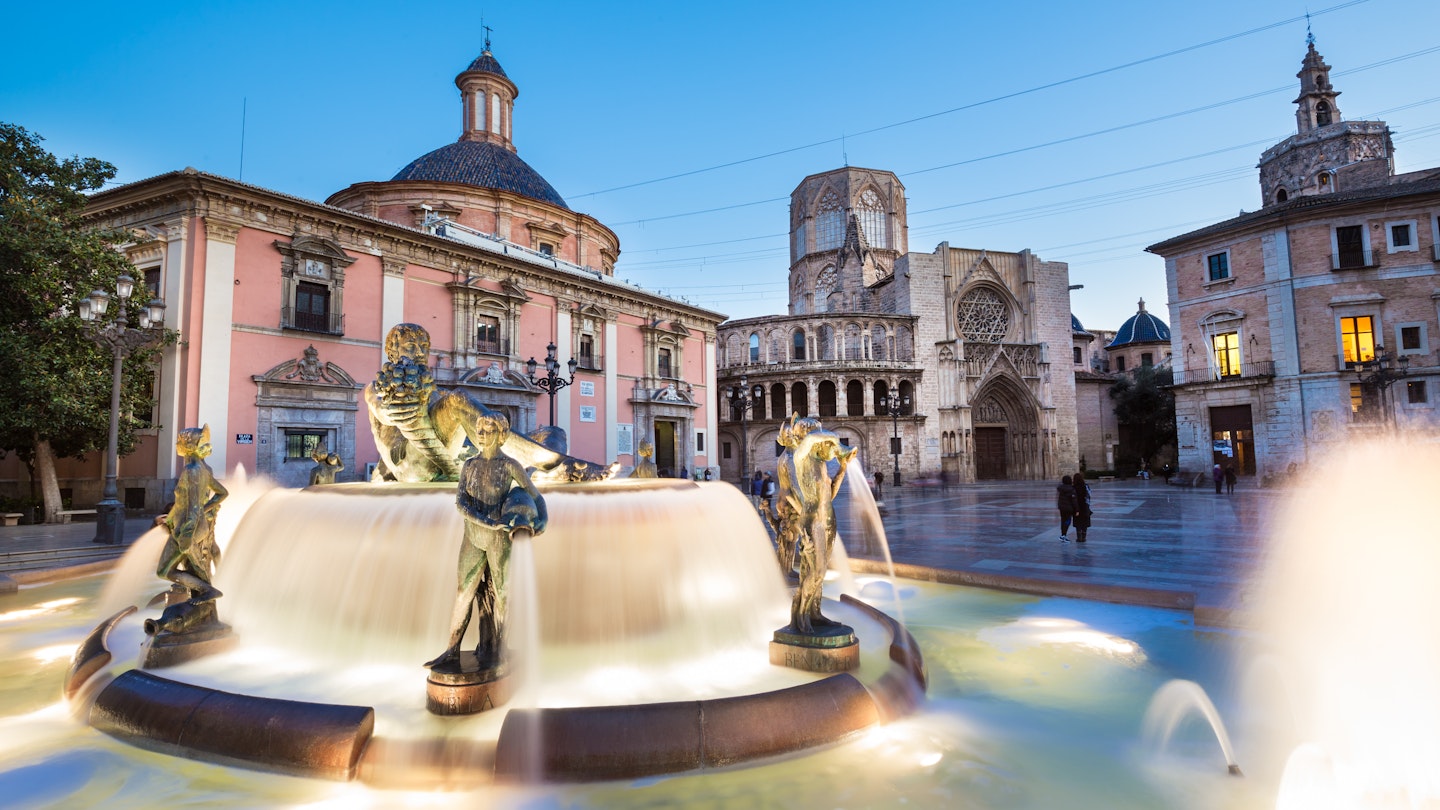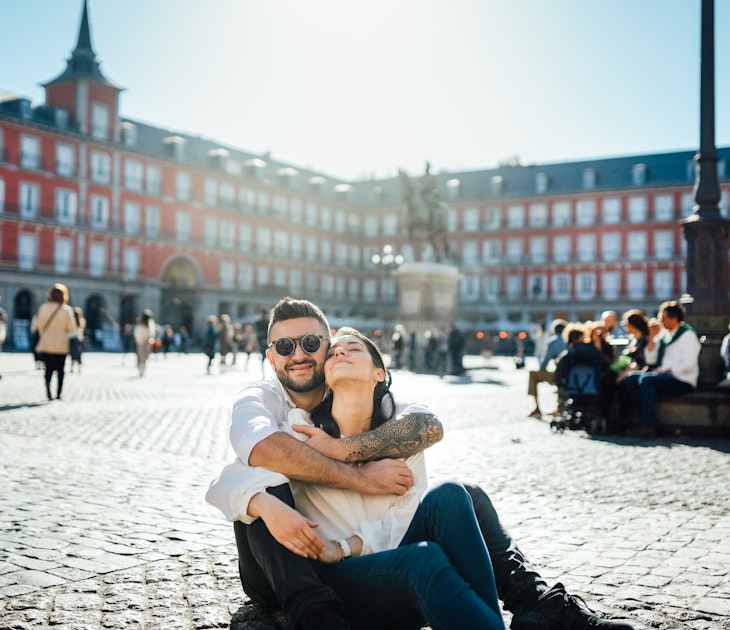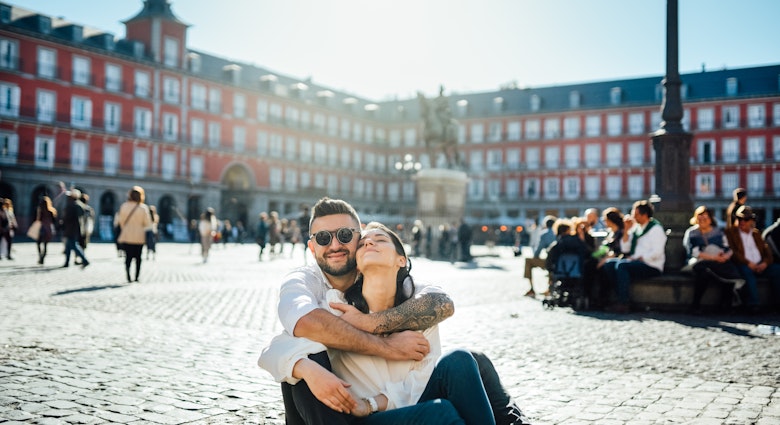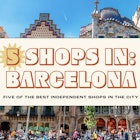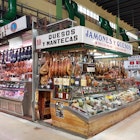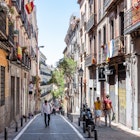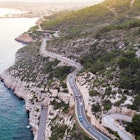Bisected by a green ribbon of parkland and studded with striking contemporary architecture, Spain’s third-largest city cherishes its centuries-old heritage while embracing innovation.
While Valencia comprises dozens of compact neighborhoods, the city’s biggest attractions and thriving dining and nightlife scenes are concentrated in select parts of the city, making them easy to explore on foot. Whether you’re after Modernista edifices, terrific museums, medieval cathedrals or Spain’s best rice dishes, our neighborhood guide highlights the best Valencia has to offer in each unique part of the city.

North Ciutat Vella
Best neighborhood for unmissable sights
The Ciutat Vella, or Old City, is Valencia’s Unesco World Heritage-listed historic heart, its origins going back some 2000 years. Encircled by a centuries-old stone wall, its tiny, atmospheric medieval lanes are packed with some of the city’s can't-miss attractions, as well as ample dining options and characterful boutique hotels.
The northern half of the walled city is centered on the Mercado Central, one of Valencia’s finest Modernista structures. Nearby is the Gothic edifice of La Lonja, the city’s 15th-century silk exchange – another top sight. Known as the Barrio del Carmen, the northwest corner of Ciutat Vella is the oldest part of the city, featuring several excellent museums, including one dedicated to contemporary art, as well as numerous thimble-sized bars and live music venues.
It’s also an utter joy to get lost in the maze of narrow streets in La Seu, a barrio featuring Valencia’s two most famous plazas: Plaza de la Virgen and Plaza de la Reina. Unmissable attractions here include Valencia’s Gothic 13th century cathedral; known locally as La Seu, it houses Valencia’s Holy Chalice and lends the barrio its name.
South Ciutat Vella
Best area for restaurants
Centered on Plaza del Ayuntamiento, an attractive square anchored by its eponymous town hall, the southern half of the Old Town is busier, more modern and more commercial than the northern half of the walled city.
Besides a couple of interesting museums – Museo del Patriarca and Museo Nacional de Cerámica – and appealing Modernista buildings, particularly in the eastern half of this neighborhood, this is a good part of town to shop for contemporary art, sip a cocktail at a stylish bar, or dine at one of many excellent restaurant on anything from Argentinian steak to Hawaiian poke.

Russafa
Best neighborhood for nightlife
South of the train station, Russafa (Ruzafa in Spanish) is an easily walkable triangle-shaped grid of streets, formerly down-at-the-heels and now rapidly gentrifying. The barrio is centered on the Mercado de Russafa, a colorful, busy produce market, and while there are no must-see sights, the main attraction here is just wandering the streets, browsing the vintage shops, literary cafes and quirky art space – or people-watching over a drink from a terrace.
Russafa is particularly popular by night, when Valencians head for the neighborhood’s many tapas bars, on-trend vermuterías (vermouth bars) and restaurants, many of which stay open into the early hours.
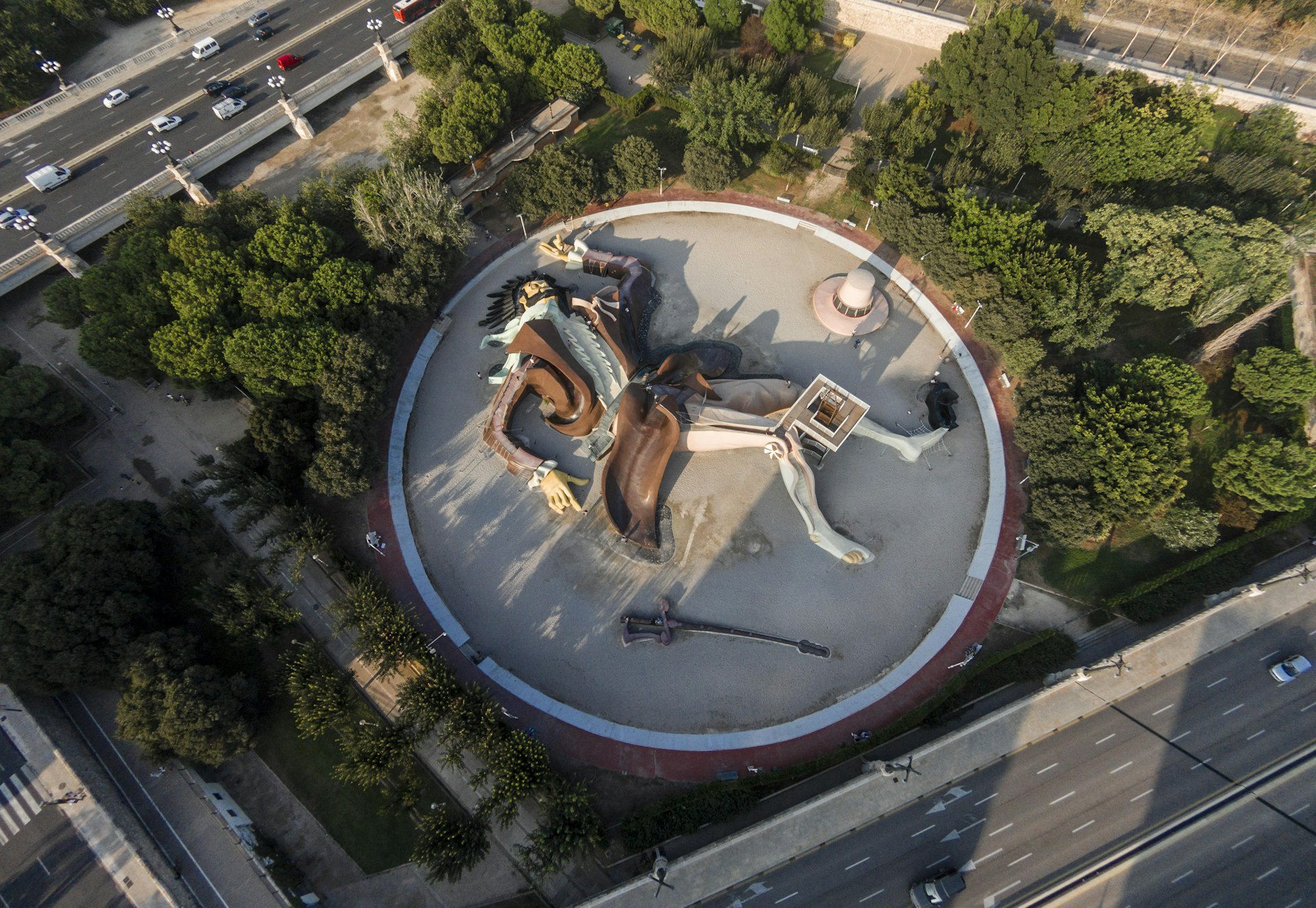
Jardines del Turia & Ciudad de las Artes y las Ciencias
Best area for sightseeing
One of the most unique parts of the city is Jardines del Turia, a 5.5-mile-long (9km) green lung that bisects the city. The dry riverbed of the flood-prone Turia river was diverted to the south of the city after the disastrous flooding of 1957, and it's since been turned into a beautifully landscaped ribbon of parkland, home to some of Valencia's biggest draws.
Cycling or walking the length of Turia Gardens is an excellent way to explore, from the Bioparc zoo at its western end to the City of Arts and Sciences, near Valencia’s port at its east. Here you’ll find a cluster of big-hitting attractions housed in futuristic buildings designed by local architect Santiago Calatrava: the eye-shaped Hemisfèric, an IMAX theater; Oceanogràfic, Spain’s most famous aquarium; state-of-the-art science museum Museu de las Ciencias Príncipe Felipe and Palau de les Arts Reina Sofia, a majestic opera house.
Around the halfway point is Jardins del Real (Royal Gardens), where you’ll find the kid-friendly Museu de Ciències Naturals. Adjacent to the gardens is the excellent Museu de Belles Arts, Spain’s second largest art gallery.
L’Eixample
Best neighborhood for shopping
Bordered by the Ciutat Vella to the north, Russafa to the south and a stretch of Turia Gardens to the east, L’Eixample means ‘extension’ in Catalan and refers to the urban expansion of the city in the 19th century, once Valencia grew beyond the stone walls of the Old City.
An upmarket, central neighborhood, made up of wide, tree-lined avenues and elegant streets, it’s divided by the broad Gran Via Marqués del Túria, lined with striking Modernista buildings. This main avenue separates the largely commercial northern half of L’Eixample, replete with local and international designer boutiques, and the southern half, distinguished by a plethora of chic cocktail bars and high-end dining options.

Benimaclet
Best neighborhood for a local vibe
On the northern reaches of the city, Benimaclet only became part of Valencia in 1972 – it was previously a separate town and still retains that small-town feel, where many people know one another. Well-connected to central Valencia via public transport, it's a vibrant place, thanks to the presence of several university campuses and a large population of local and international students.
Short on attractions, Benimaclet is well worth a visit for the thriving dining and nightlife scene, its grid of streets dotted with inexpensive bars and restaurants serving global cuisine.
El Cabanyal
Best neighborhood for beaches and traditional food
Flanked by the wide, sandy Playa de Las Arenas and Playa Malvarrosa, the former fishermen's quarter of El Cabanyal is located an easy 3.1-mile (5km) tram or metro ride east of the historic center. Its narrow streets lined with renovated fishermen’s houses and some fine examples of Modernista-style residential buildings, this is one of the less touristy parts of Valencia.
This is changing, however, as the neighborhood becomes more gentrified, more lively bars open along the waterfront and plans to repurpose abandoned industrial buildings as cultural venues come to fruition. During the warmer months, the beach is popular with locals who come here to sunbathe, cycle along the promenade or grab some traditional paella at one of the many low-key restaurants, while winter months leave El Cabanyal looking and feeling deserted.
The Port (Poblats Marítims)
Best area for boating
Just south of El Cabanyal is Valencia’s port, which was spruced up in time for the Americas Cup in 2007. The royal marina is gaining in international popularity, and it's good for watching vast cruise liners and yachts pull in from the northern half of the marina, where you’ll also find water-sports outlets and an observation deck overlooking the port, plus several good restaurants in a prime seafront location inside the Veles e Vents building. The port area is also home to a concert hall and a skate park, and city authorities are looking into converting former warehouse buildings into new attractions.
You might also like:
The 12 top free things to do in Valencia
Learn about Valencia by visiting its best museums
Getting around in Valencia: how to navigate the Spanish city
Valencia’s best beaches – get the morning sun before almost anywhere else in Spain
